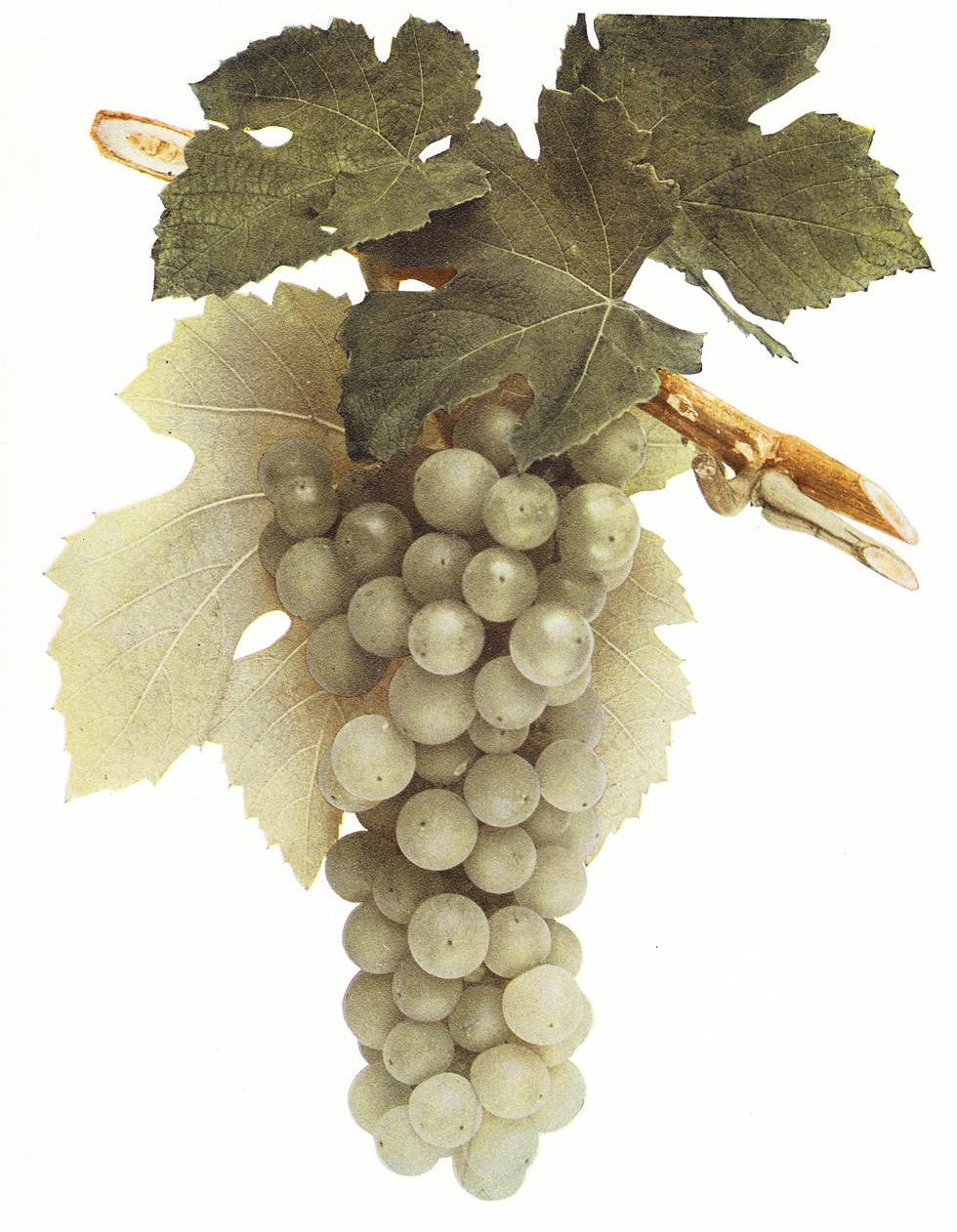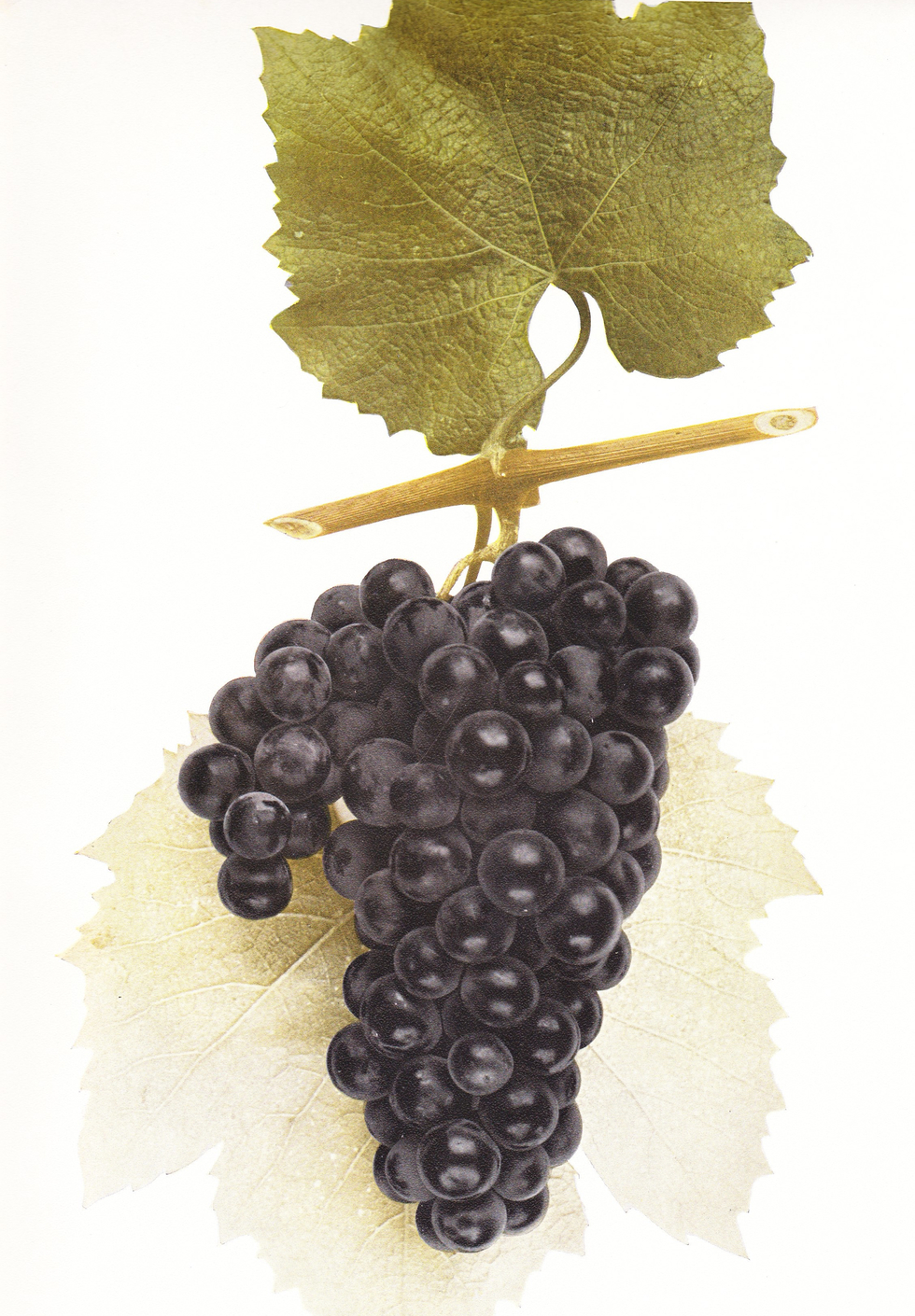These two prints, from U.P. Hedrick’s, The Grapes of New York, published in 1908, show the grapes that made Richard T. Underhill famous as the “Grape King.”
Underhill began his vineyard by planting European varieties of grapes he purchased in Brooklyn from André Parmentier, a wealthy, educated Belgian who came to America to escape the French Revolution. Parmentier started a nursery that included a vineyard. At first he sold only European grapes but, according to Hedrick, he later added “the two American varieties, Catawba and Isabella, which were then becoming popular.”
Underhill’s first batch of European varieties died, but he “had been fired with a consuming desire to grow grapes. In 1827 he began planting Catawbas and Isabellas. This vineyard of American grapes grew until it covered 75 acres, the product of which was sold in New York City. This was the first large vineyard in the country.”
Underhill’s hybrid grapes. “Croton” (above) and “Senasqua” (below) were described in An Illustrated Descriptive Catalogue of American Grape Vines, published in 1883:
- Croton. Hybrid cross between Delaware and Chasselas de Fontainbleau, originated by . . . Underhill, of Croton Point, N. Y.; bore its first fruit in 1865. In 1868 and following years it obtained prizes at the New York, Pennsylvania and Massachusetts Horticultural Societies and other grape exhibitions, attracting marked attention. The late H. E. Hooker, of New York, said: “The Croton succeeds very well indeed in some localities, and it is certainly one of the most delightful grapes, when well-grown, that I have ever raised.”
- Senasqua. A hybrid raised by . . . Underhill, Croton Point, N.Y. from Concord and Black Prince. Seed was planted in 1863 and the vine bore its first fruit 1865.
See Underhill vineyard trade cards and magazine ads here and here.


These prints are simply stunning; the clarity is wonderful.